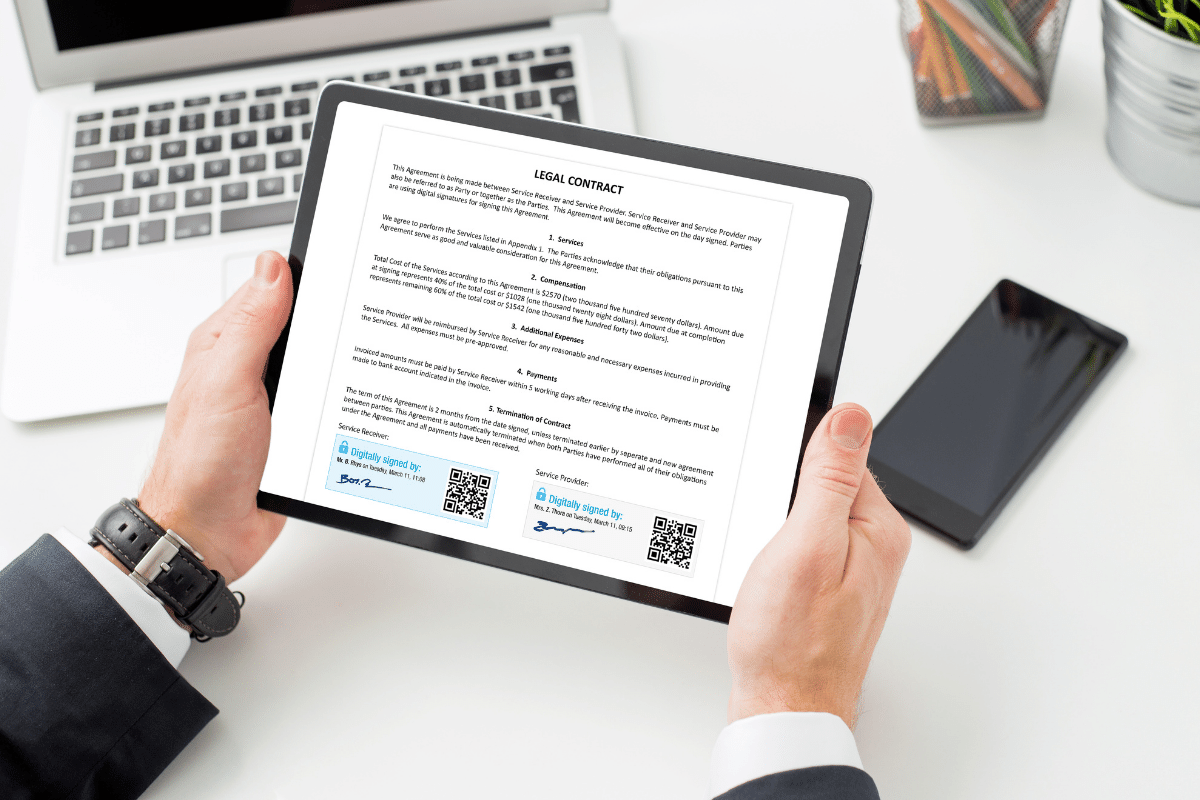
I’m often asked by lawyers, especially working for an in-house legal team, to send them a physical copy of the newly agreed contract for a deal with a ‘wet ink’ signature. I’m informed that it’s corporate policy and it baffles me! I can send the document with a digital signature via email within minutes, but to send the same via post, I need to scan the 30-40 pages, print, sign and then post. On receiving the document, the lawyer likely follows the same process to send a signed copy back.
Aside from it being a highly inefficient and cumbersome process, in today’s technology-driven world, there’s a business rationale behind digital signatures:
Legally admissible
Foremost, they are legally admissible globally. In the UK, the Electronics Communication Act came into effect in 2000 and makes electronic signatures admissible in legal proceedings. Similarly, they are legally admissible and enforceable in the European Union and even in the rest of the world.
Security
Digital signatures are more secure than wet ink signatures. There is no way of knowing if a hand-written signature has indeed been signed by the designated individual. On the other hand, digital signature technology is developed based on industry security certification standards, ensures privacy of data by fully encrypting the documents and provides excellent authentication options to restrict access to unauthorised individuals. Also, the technology provides a ‘tamper seal’ to documents, which ensures that it’s not tampered with in any way after it has been downloaded.
Audit trail
There is an audit trail with digital signatures. Users can track the document through every step of the process until it is securely stored. Also, there is complete visibility including who has viewed the document, who printed it, who signed it, did anyone decline to sign the contract and so on. This supports compliance.
Mobility
For those who work out of the office a lot, the advanced digital signature software providers offer mobile apps that allow users to prepare and send documents for signatures from their devices. Users can also sign via their smartphone or tablet. How often does it happen that the key signatory of a major deal is holding up contract closure because he or she is travelling on work?
Storage and availability
Given that in a typical organisation, signed documents and contracts can run into the hundreds, allocating physical space for their storage is costly and honestly unnecessary. A hard copy of a document tucked away in a storage facility inside the office or externally isn’t as easily accessible as it would be if it sat in the organisation’s document management system. One frequently hears stories of how certain contracts weren’t adhered to because they simply couldn’t be located for review!
A wet ink signature approach to documentation is a legacy of the past. With technology underpinning business operation, digital signatures are a quick win for efficiency and productivity. It’s simple to institute and is hassle-free to use. It’s worth considering!
.png?width=180&height=65&name=Ascertus%20Logo_360x130%20(1).png)